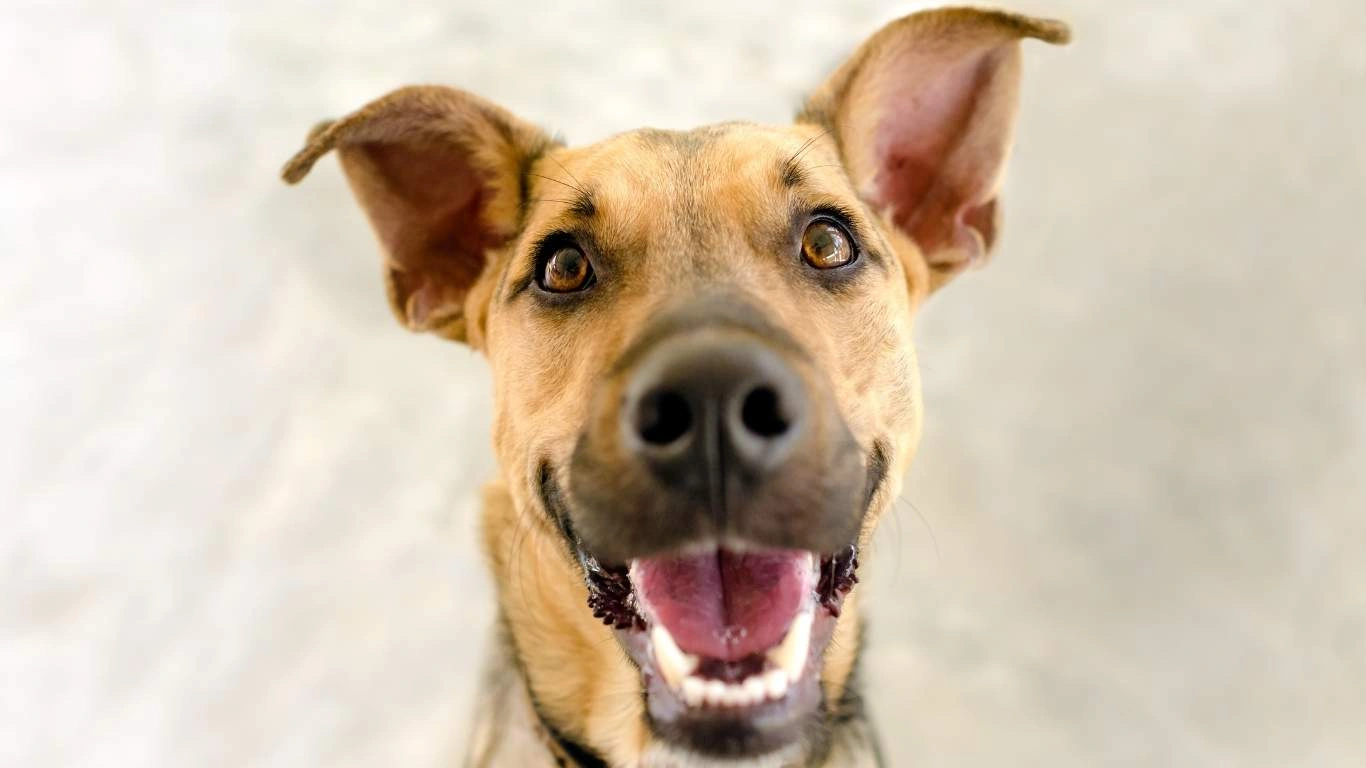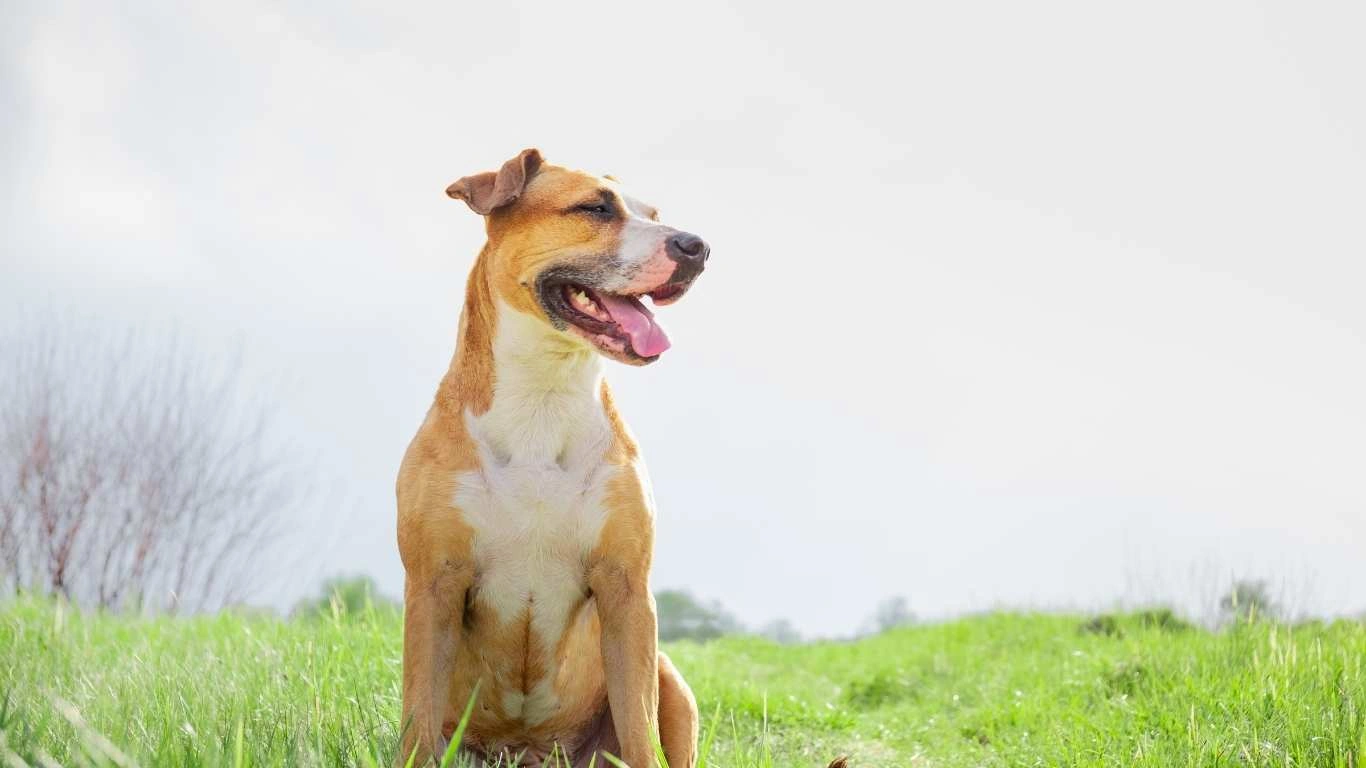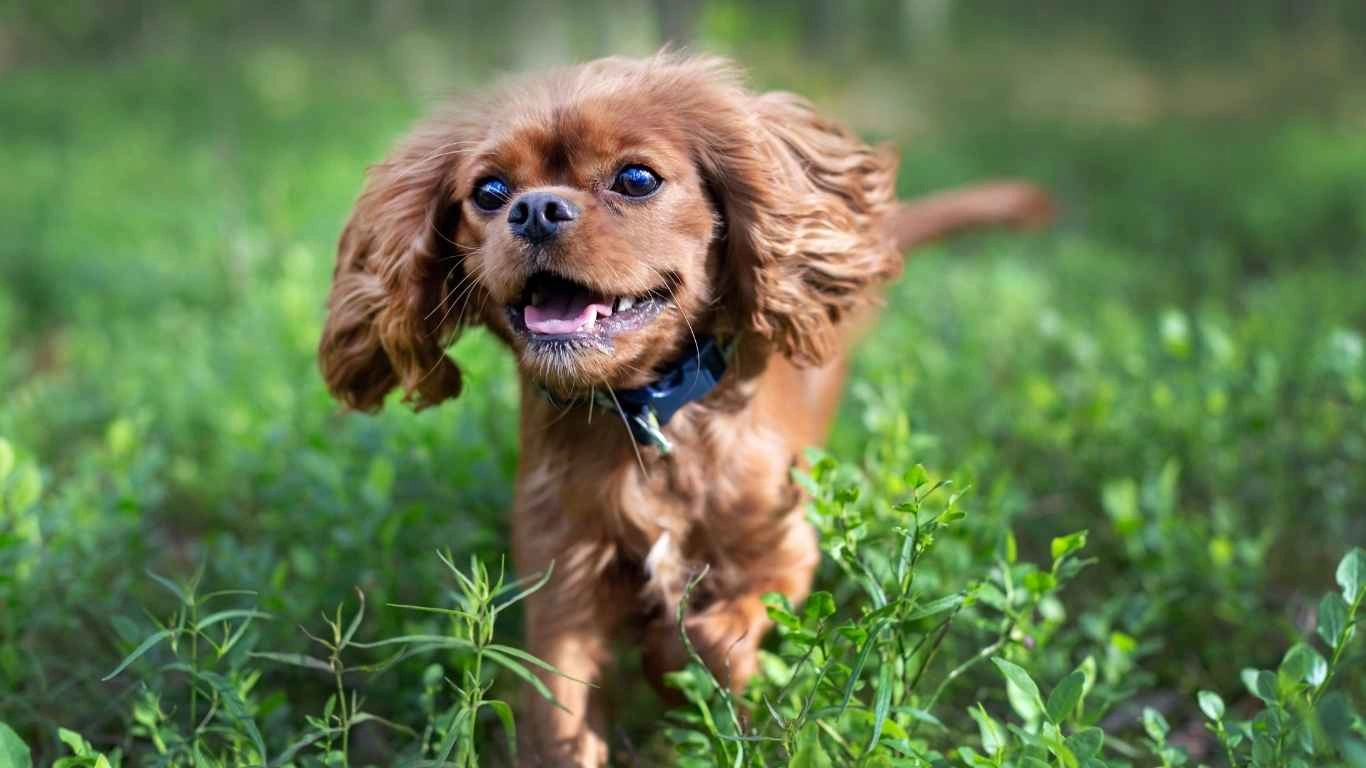Discover How to Use Chia Seeds in Homemade Dog Food for Healthier Pets
When it comes to giving our pups the best possible nutrition, I’ve always believed that a homemade touch goes a long way. Working as an Animal Care Specialist in pet clinics and shelters, I’ve seen firsthand how much diet impacts a dog’s health—from dull coats to upset stomachs, and even mood changes. So if you’re looking to supercharge your dog’s meals with a tiny but mighty ingredient, you’re in the right place. Today, we’re diving into how to use chia seeds in homemade dog food. Yep, those same little seeds that health gurus sprinkle on their smoothies? Turns out, they’re just as amazing for our furry companions.
Why Chia Seeds Deserve a Spot in Your Dog’s Bowl

Let me start by saying—back when I first started experimenting with homemade meals for shelter dogs with sensitive stomachs, chia seeds weren’t even on my radar. I was all about boiled chicken and plain rice. But once I saw how dogs responded to meals boosted with a spoonful of these little guys, I was sold. They’re loaded with nutrients and incredibly easy to use.
- Rich in Omega-3 fatty acids: These help reduce inflammation, boost brain health, and improve skin and coat condition.
- High in fiber: A blessing for digestive issues—especially for those pups who constantly have tummy troubles.
- Protein-packed: Great for muscle repair and energy, particularly for active or older dogs.
- Loaded with antioxidants: Helping to fight free radicals and keep your pup’s immune system sharp.
And because chia seeds are flavor-neutral, dogs don’t even notice them in their food—which is awesome if your pup is on the picky side. Been there, done that, with a Yorkie who’d turn her nose up at even the fanciest store-bought kibble!
How to Use Chia Seeds in Homemade Dog Food

Before you toss dry chia seeds into your pup’s bowl, there are a few things you’ll want to keep in mind. Trust me, after years of making meals from scratch for shelter dogs with all sorts of dietary restrictions, I’ve learned a few do’s and don’ts that can make a big difference.
1. Soak Them First
This one’s important. Chia seeds expand when mixed with liquid—up to 10 times their size. If you feed them dry, they can absorb moisture from your dog’s digestive tract, which may lead to dehydration or discomfort. Instead, soak them in water (or even low-sodium bone broth) for at least 15–20 minutes before adding them to meals.
2. Start Slow
If your dog’s new to chia, ease into it. A good starter amount is about 1/4 teaspoon per 10 pounds of body weight, once per day. Watch for any digestive upset, like loose stools, and adjust accordingly. In most cases, dogs tolerate them really well, especially if they’re used to fiber-rich foods.
3. Mix Into Homemade Meals
There’s no one-size-fits-all recipe here, which is honestly part of the fun. I’ve mixed chia seeds into everything from ground turkey and veggies to sweet potato and salmon mash. Once soaked, they blend right in and help thicken up the consistency of wet food.
- Prepare your base (meat, carb, veggie).
- Add in soaked chia seeds (after cooling the food if it’s been cooked).
- Mix thoroughly and serve fresh or portion out for the week.
4. Combine With Other Superfoods
One of my favorite combinations at the clinic was chia with a touch of turmeric and a spoonful of plain pumpkin purée. Dogs gobbled it up, and we noticed improvements in their coats and energy levels within just a few weeks.
Common Mistakes to Avoid With Chia Seeds

Of course, even the healthiest foods can backfire if not used correctly. Over the years, I’ve seen some well-meaning pet parents make these missteps with chia:
- Using too much too soon: Dogs need time to adjust to fiber increases.
- Not soaking the seeds: This can lead to bloating or constipation.
- Feeding expired or moldy seeds: Always store them in a cool, dry place. I keep mine in an airtight jar in the fridge—easy to grab, easy to keep fresh.
Remember, every dog is different. What works great for one may need tweaking for another. The key is paying attention to your pup’s reaction and making adjustments based on their individual needs. That’s what I’ve always done with every dog I’ve cared for—clinic, shelter, or home.
Creative Ways to Add Chia Seeds to Homemade Dog Food

Once you’ve got the hang of soaking chia seeds and measuring them correctly, you can really start having fun with how you use them. At the shelter where I worked, we’d get creative out of necessity—limited supplies meant lots of improvising! And chia seeds? They were like our little secret weapon for boosting meals on a budget.
1. Chia-Boosted Meatballs
These were always a hit with our senior pups. I’d mix ground beef or turkey with cooked quinoa, finely chopped carrots, soaked chia seeds, and a pinch of turmeric. Roll them into mini meatballs, bake until firm, and boom—protein-packed, anti-inflammatory treats that were easy on aging teeth.
2. Chia Doggie Pops
Perfect for hot days. Blend plain Greek yogurt with a bit of pumpkin purée, toss in some soaked chia seeds, pour the mix into silicone molds or ice cube trays, and freeze. Dogs LOVE these. I remember this one husky mix who’d bark at the freezer door every afternoon—he knew it was pupsicle time.
3. Rice and Veggie Mix-Ins
If you’re already cooking up a batch of rice and mixed veggies (think sweet potato, peas, green beans), adding chia seeds after cooking makes it more nutritious without complicating the prep. Let the food cool slightly first, then stir in the soaked seeds. They help bind everything together too, which makes portioning easy if you meal-prep for the week.
Choosing the Right Chia Seeds

Not all chia seeds are created equal, and yes—this part matters. I once grabbed a bargain brand from a discount bin, and let’s just say… lesson learned. The seeds were gritty, unevenly colored, and had a weird smell. Dogs noticed. I noticed. Into the trash they went.
- Go organic when possible: Fewer pesticides and chemicals.
- Look for black or white seeds only: Avoid brown chia—they’re typically under-ripe and less nutritious.
- Check the packaging date: Freshness counts. Chia can go rancid over time, especially if not stored properly.
I always store mine in a glass jar in the fridge, away from light and heat. You’d be surprised how long a small bag lasts, especially when feeding dogs just a few teaspoons per day.
What Vets Say About Chia Seeds for Dogs

Over the years, I’ve talked to plenty of vets about homemade diets, especially when dogs came into the clinic with skin issues or digestive troubles. A few of the vets I worked closely with actually recommended chia seeds before I even brought them up. That was the lightbulb moment for me—they’re not just some trendy “superfood,” they’re backed by science and experience.
Here’s what most vets agree on when it comes to chia for dogs:
- Safe in moderation: As long as the seeds are soaked and portions are correct, they’re generally very well tolerated.
- Useful for allergy-prone dogs: Because chia is non-allergenic and gluten-free, it’s a smart choice for pups with food sensitivities.
- Beneficial for weight management: Thanks to the fiber content, chia seeds can help dogs feel full longer without overfeeding.
One of our long-term residents—a Lab mix with a chronic itching issue—saw serious improvements after a switch to a homemade fish-and-rice diet with chia seeds added. His coat filled out beautifully within a month. The vet was impressed. So were we.
Signs Your Dog is Loving (or Not Loving) Chia Seeds
Let’s be real: not every change goes off without a hitch. While most dogs adapt well, it’s important to watch their reactions when introducing something new to their diet. Here’s what I usually tell pet parents to look for:
Positive Signs
- Shinier coat and less dandruff
- More regular (and less smelly!) stools
- Increased energy and playfulness
Warning Signs
- Loose stools or diarrhea (common if too much too fast)
- Reluctance to eat (may be the texture if not mixed well)
- Gas or bloating (again, typically tied to quantity or dry seeds)
If your dog’s not into it right away, try pairing chia seeds with flavors they love—like tuna water, bone broth, or pumpkin. I had a foster shepherd who wouldn’t touch chia in chicken, but mix it with sardines? Clean bowl, every time.
Bottom line: chia seeds can be a fantastic add-on to your homemade dog food routine, as long as you introduce them thoughtfully and pay attention to your dog’s cues. In my years working with all kinds of dogs—anxious, picky, elderly, overweight—I’ve seen chia become a game-changer more than once.
When Not to Use Chia Seeds in Homemade Dog Food

Alright, so we’ve talked a lot about the perks of chia seeds—but like with anything, there’s a time and place. Over the years, I’ve worked with a handful of dogs where chia just wasn’t the best fit. It’s rare, but it happens. And being mindful of when not to use chia seeds in homemade dog food is just as important as knowing when to use them.
1. Dogs with a History of Digestive Sensitivity
If your pup has a delicate digestive system or a diagnosed condition like IBS or pancreatitis, talk to your vet first. I had a sweet little Cocker Spaniel named Luna who struggled with every diet tweak we made. Even a spoonful of soaked chia made her gassy and uncomfortable. Some dogs just don’t do well with high-fiber additions—so always monitor closely.
2. Puppies Under 6 Months
Young pups have developing systems, and they need very specific ratios of calcium, phosphorus, fat, and protein. I generally recommend steering clear of any “extra” superfoods unless your vet gives the green light. Puppies are adorable chaos machines as it is—no need to complicate mealtime!
3. Dogs on Special Medications
This one’s often overlooked. Chia seeds can potentially interfere with absorption of some medications due to their fiber content. If your dog is on thyroid meds, heart meds, or anything long-term, ask your vet before introducing chia into the mix.
Homemade Dog Food Recipe with Chia Seeds (Tried-and-True)

Alright, now let’s get into something practical. Here’s one of my go-to recipes I’ve made dozens of times in the clinic kitchen and at home. It’s gentle, filling, and super easy to prep.
Ingredients:
- 1 lb ground turkey or lean beef
- 1 cup cooked quinoa or brown rice
- 1/2 cup shredded carrots
- 1/4 cup green peas (no salt added)
- 1 tbsp soaked chia seeds
- 1 tsp turmeric powder (optional)
- 1/2 cup low-sodium bone broth
Instructions:
- Brown the ground meat in a pan. Drain any excess fat.
- Stir in quinoa, veggies, and bone broth. Simmer on low for 10 minutes.
- Remove from heat and let cool slightly before stirring in soaked chia seeds and turmeric.
- Mix thoroughly and portion out into containers.
I usually freeze half and refrigerate the rest. This meal always goes over well—even with picky eaters. Plus, it smells good enough that I’ve had a few curious shelter volunteers ask, “Wait… is that for us or the dogs?” (Fair question.)
How to Talk to Your Vet About Chia Seeds
It might feel weird to bring up “chia seeds” during your next vet visit, but trust me—it’s worth the chat. Vets love when pet parents are proactive, and chia can actually support a ton of common issues: dry skin, dull coat, low energy, etc.
Here’s how to approach the convo:
- Describe your dog’s current diet and why you’re considering chia.
- Mention the amount you plan to use and how you’re preparing it.
- Ask if chia might interact with any medications or conditions.
I’ve done this for every foster or rescue dog before switching up their meals—and it always pays off. Sometimes the vet even recommends adjusting the recipe slightly to suit the dog’s needs better. It’s a team effort, really.
References
Disclaimer
This article is based on my personal experience as an Animal Care Specialist and is meant for informational purposes only. It should not be taken as medical advice or a substitute for professional veterinary consultation. Always speak with your vet before making any changes to your dog’s diet, especially when introducing new ingredients like chia seeds.






